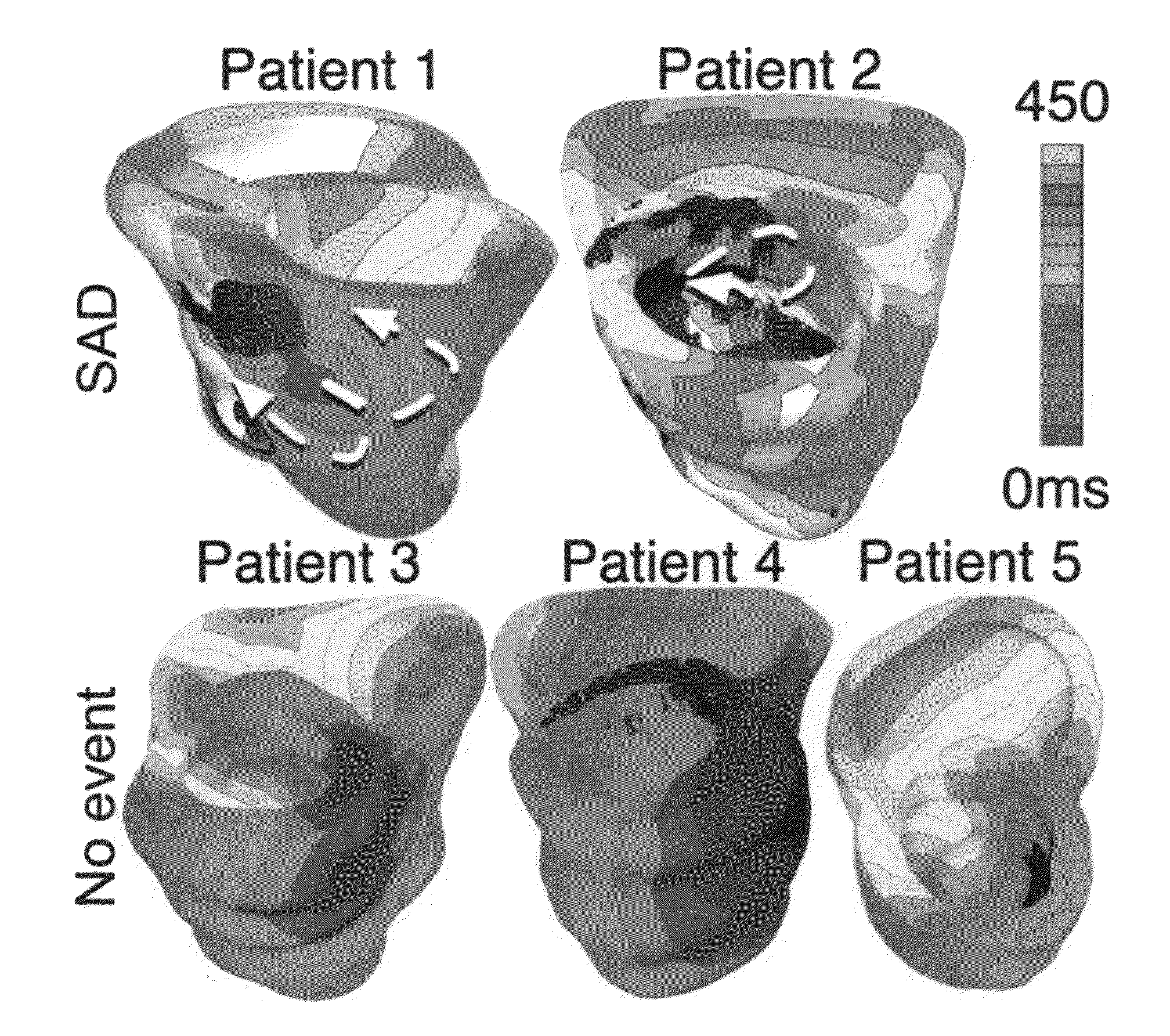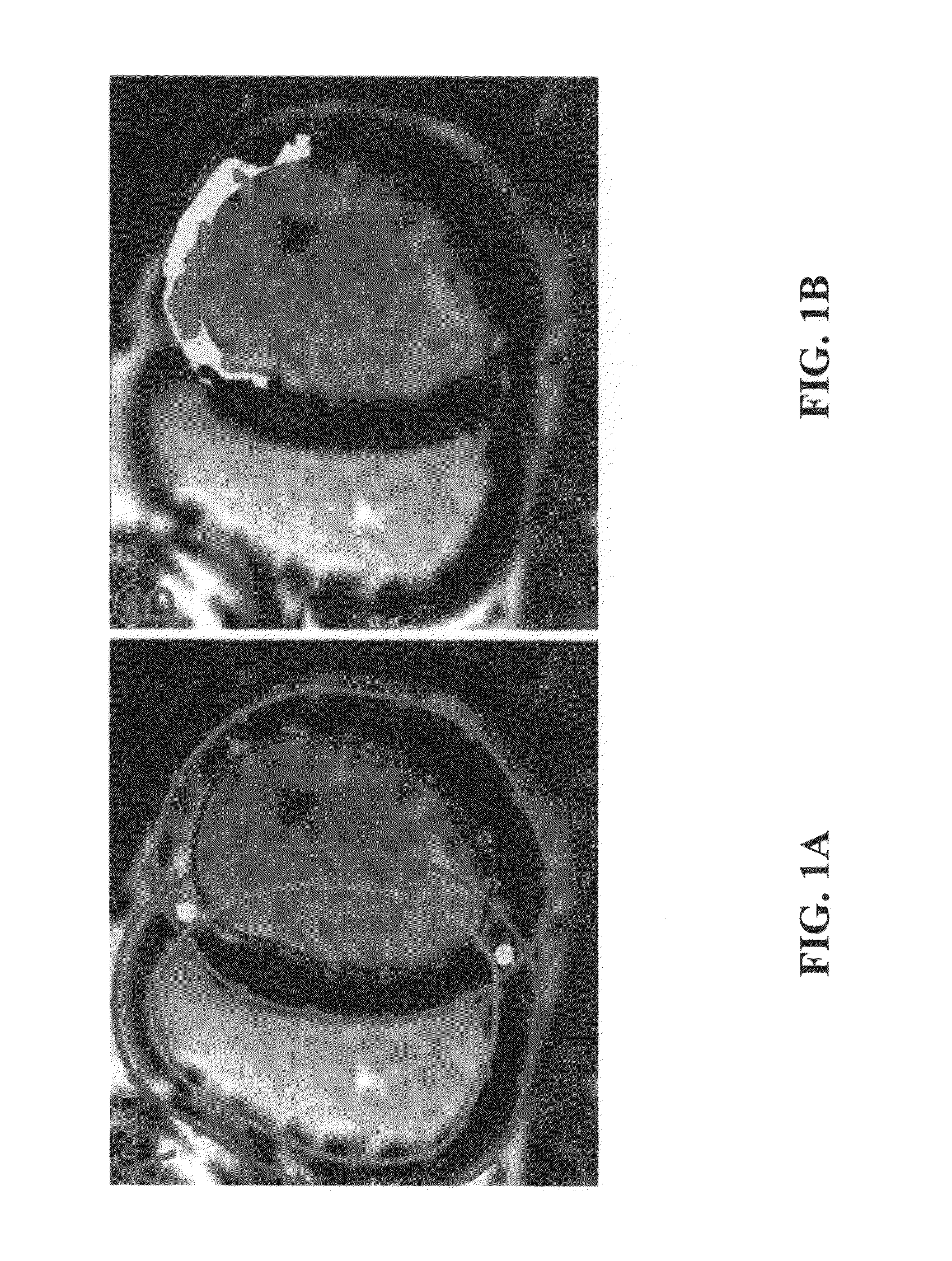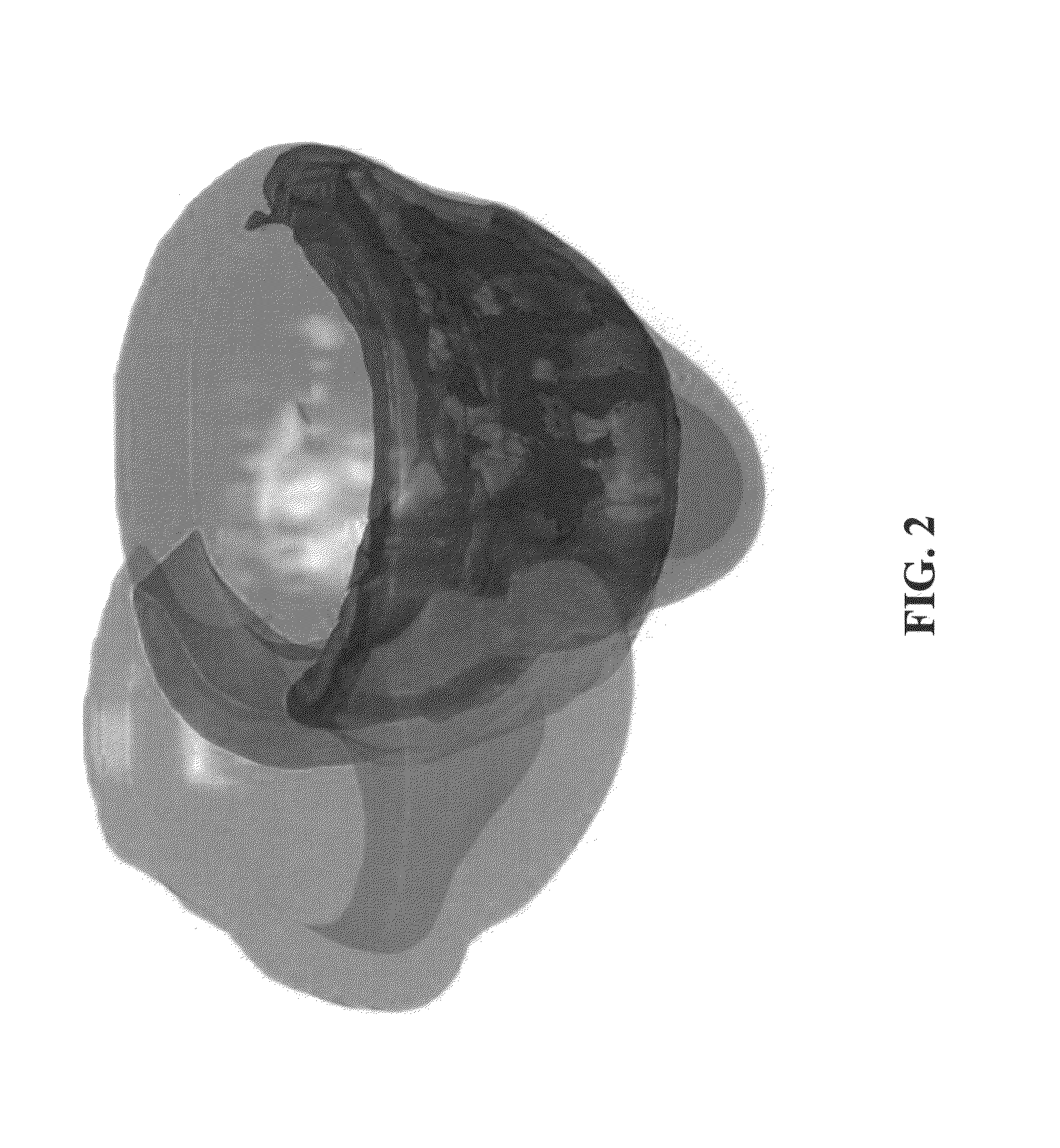System and method for personalized cardiac arrhythmia risk assessment by simulating arrhythmia inducibility
a risk assessment and arrhythmia technology, applied in the field of personalized cardiac arrhythmia risk assessment by simulating arrhythmia inducibility, can solve the problems of low quality of life, difficult selection of patients who need icds,
- Summary
- Abstract
- Description
- Claims
- Application Information
AI Technical Summary
Benefits of technology
Problems solved by technology
Method used
Image
Examples
examples
[0037]FIG. 7 is a flowchart illustrating methods according to some embodiments of the current invention. The data are illustrated in a parallelogram, and the processing steps in rectangular blocks. Note that the results of registration of the patient heart geometry with the atlas is used both in the estimation of patient fiber orientations, and automatic placement of PES sites. However, the general concepts of the current invention are not limited to these examples. We have other methods for both fiber estimation and automatic placement of the PES sites
Reconstruction of 3D Ventricular and Infarct Geometries from Clinical LGE-CMR Images
[0038]It is necessary to reconstruct high-resolution (3). A semi-automatic approach according to an embodiment of the current invention is illustrated in FIGS. 1 and 2 (for a heart with infarction). In each short-axis slice, four smooth contours that represent endocardium and epicardium of LV and RV are semi-automatically drawn. The section of the LV w...
PUM
 Login to View More
Login to View More Abstract
Description
Claims
Application Information
 Login to View More
Login to View More - R&D
- Intellectual Property
- Life Sciences
- Materials
- Tech Scout
- Unparalleled Data Quality
- Higher Quality Content
- 60% Fewer Hallucinations
Browse by: Latest US Patents, China's latest patents, Technical Efficacy Thesaurus, Application Domain, Technology Topic, Popular Technical Reports.
© 2025 PatSnap. All rights reserved.Legal|Privacy policy|Modern Slavery Act Transparency Statement|Sitemap|About US| Contact US: help@patsnap.com



